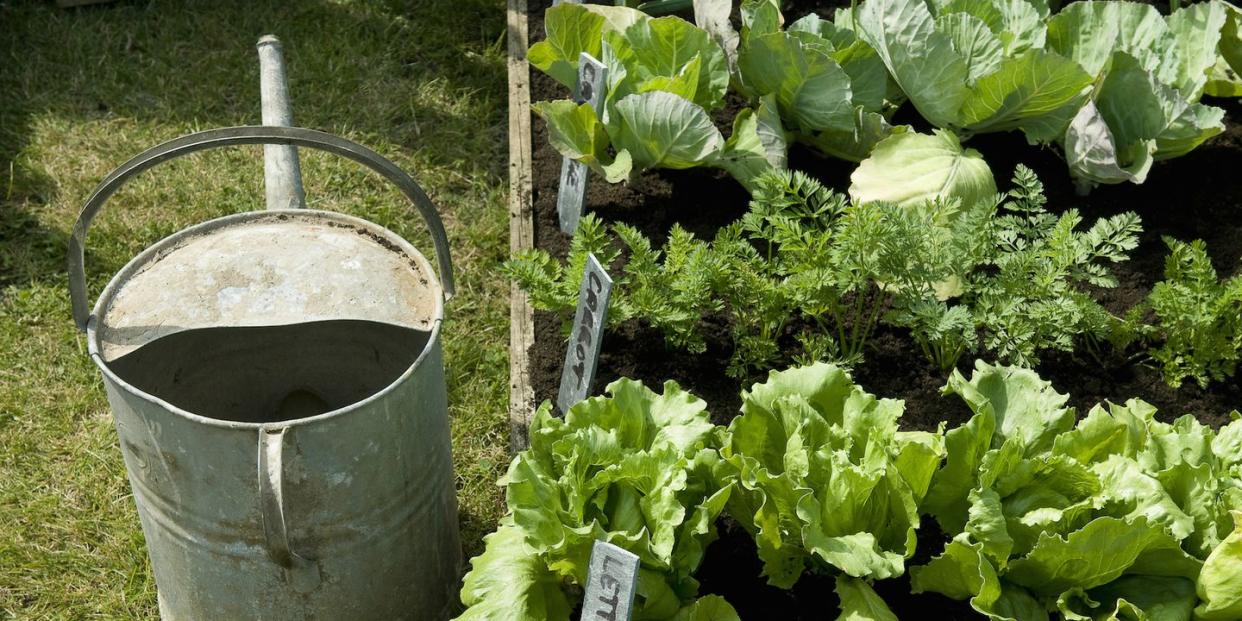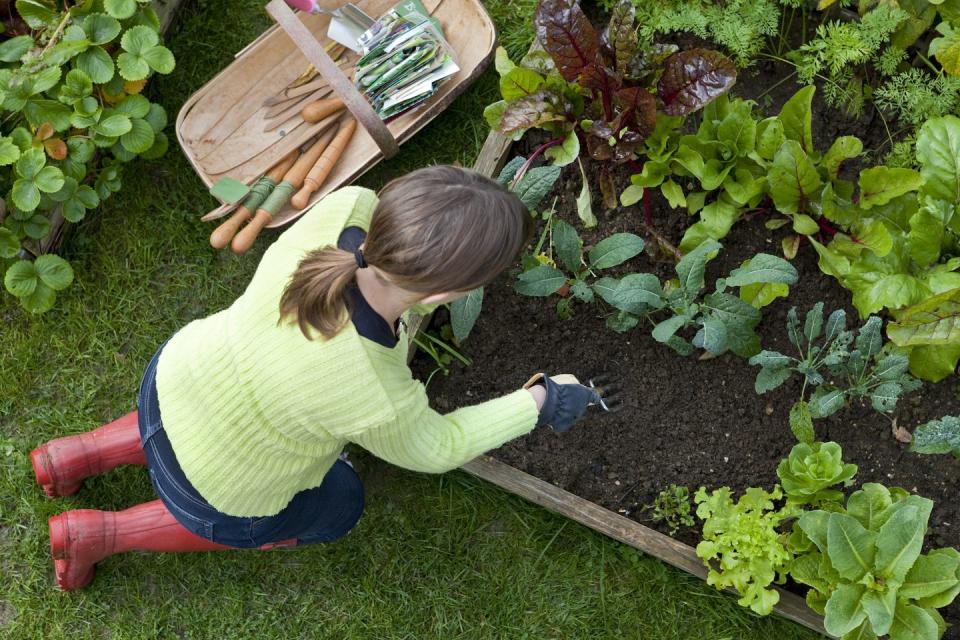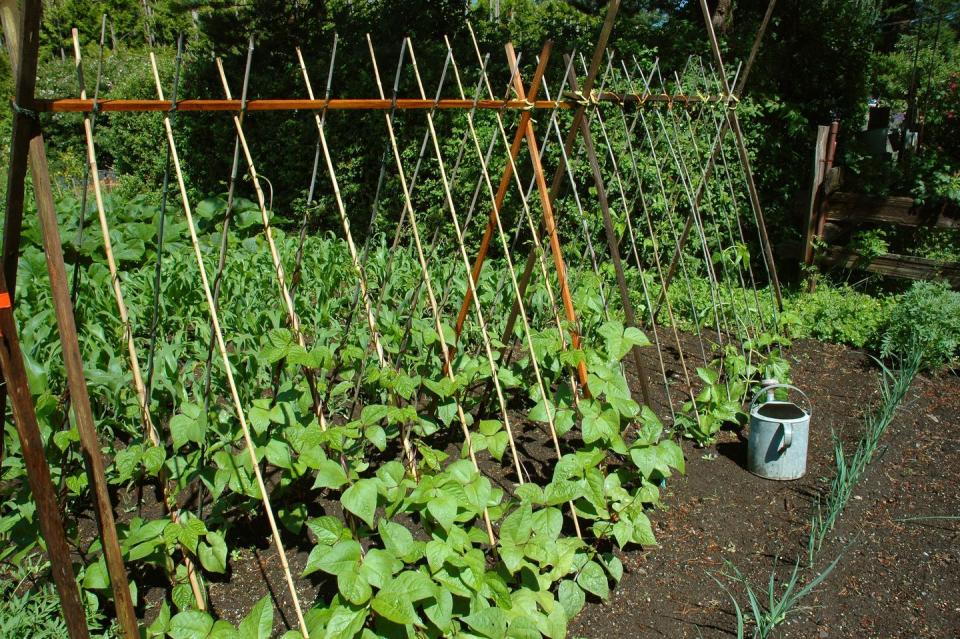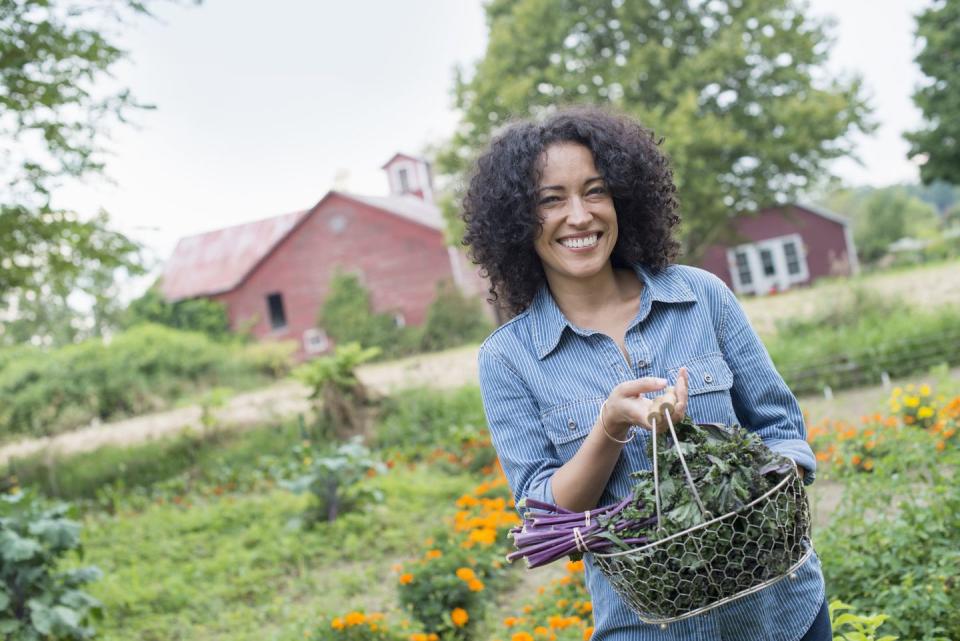Here's How to Keep Your Vegetable Garden Alive

Now that you’ve planted your first (or biggest!) vegetable garden ever, you’ve got do a little work to keep it producing. After all, those plants can’t take care of themselves! It’s actually not as difficult as you think. And even your garden mistakes are useful because the only way to learn is to get in there and get your hands dirty. Hopefully, you planted your vegetables in full sun, which is about 6 or more hours per day. (If not, your garden will not produce as well this year, but live and learn for next year!) If you have pots or containers that aren’t getting 6 hours, move them to full sun now. Otherwise, all your baby plants need are the basics: Water and food and a watchful eye from you. Inspect your containers or meander through your garden in the morning or evening to see what’s happening so you can tackle any issues immediately. Bonus: Nothing is more peaceful than spending time in the serenity of your own little piece of nature!
Here’s what else you can do to get the most out of your vegetable garden this year:

Keep up with the weeds.
Weeds steal nutrients and water from your vegetables! Make it a habit to yank weeds when they’re tiny, rather than waiting until they’ve taken over the whole bed. And believe us: It only takes a week or so of inattention before you’re swamped. Pull weeds when you see them, and you’ll save yourself a lot of time and frustration!
Don’t forget to water.
This may sound obvious, but don’t wait for your plants to wilt to water them. The stress of wilting interrupts growth and can reduce your harvest. Even if it rained, you may still need to water. If it wasn’t a downpour, your garden may appear wet but be dry an inch below the surface. Try this simple test: Grab a handful of soil and squeeze. If you can squeeze water out, it doesn’t need watered. If the soil clod falls apart in chunks, it’s time to water. If the soil crumbles evenly and feels slightly moist, it’s in good shape. Pay extra attention to pots and containers, which dry out faster and often need watered daily in the heat of summer.
Feed your plants.
If you added slow-release fertilizer to your beds when you planted, it’s time to feed them again at about 3 weeks and about 6 weeks after planting. Follow the package directions for application rates. Containers need fertilized more regularly, about every 1 to 2 weeks. Either liquid and dry fertilizers are fine—it really gets down to your preference. And heads up if you prefer using organic fertilizers: Bone meal, blood and fish meal are enticingly smelly to pets and can cause illness or dangerous intestinal blockages if eaten. Fence your garden to be sure your pet doesn’t get into something that will make him or her sick.
Watch for bugs and diseases.
It’s easier to stop an invasion before it begins in full force! Inspect the leaves of your vegetable plants regularly. If you see bugs or the leaves are curling or turning yellow or brown, do an online search to figure out what you’re dealing with. Or contact your local university coop extension service (find yours here) to help you ID and treat.

Give your plants the right support.
Many plants benefit from a structure to keep them upright. Most tomatoes, pole beans, peas, cucumbers, squash, eggplants, and peppers typically need a stake or trellis. Support keeps a plant from breaking under its own weight, especially when loaded up with fruit, and it also allows better air circulation, which may help prevent diseases. Any structure is fine, even (free!) branches you lash together. Tie plants loosely every 12 inches or so to the structure, although veggies such as peas and cucumbers have little tendrils that will grasp the structure on their own.

Pick your veggies as soon as they’re ready.
Most vegetable plants benefit by your picking them as soon as they’re a good size to eat. There’s no benefit to waiting too long! Small, tender zucchini and other types of summer squash are more palatable than gigantic, seedy ones. And the more you pick beans, the more they produce. During the height of the growing season, check daily for ripeness. For example, cucumbers can double in size in one day under ideal growing conditions!
Pull anything that’s struggling or done producing.
That’s right. Sometimes you’ve got to be a little brutal with your garden! By mid-summer, your plants should be lush and healthy. If a tomato plant is spindly and purple or yellow (signs of nutrient deficiencies) or your beans look sickly, it’s time for them to go. Peas stop producing once the temperatures rise, so pull those plants, too. Lettuce and spinach bolt, or go to seed, and become bitter. Toss it all in your compost pile (except for diseased plants).
Plant a succession crop.
Use your reclaimed space for a new short-season crop such as cucumbers or radishes, or begin planting for fall harvests. Check the seed package or plant label for “days to maturity” so you’ll know whether or not you have sufficient time for the plant to bear before the first frost in your area.
You Might Also Like

